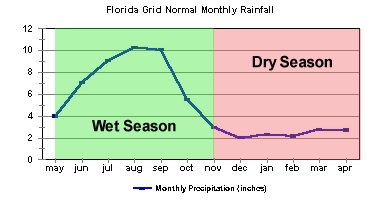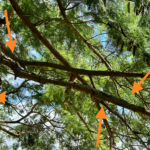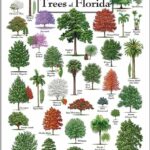Wet and Dry Seasons In Florida: The Effects On Your Trees
Florida, known for its warm and sunny climate, experiences unique seasonal changes that influence the behavior and growth of trees. While Florida doesn’t have the typical four seasons like other regions, it does have distinct wet and dry seasons. Let’s explore how these seasons impact trees in the Sunshine State.
and dry seasons. Let’s explore how these seasons impact trees in the Sunshine State.
Wet Season (Summer and Early Fall):
The wet season in Florida typically starts in late spring and extends through early fall. During this time, the state experiences frequent rainfall and higher humidity levels. The wet season is essential for trees as it provides them with ample water for growth and development.
Positive Effects on Trees:
Growth Spurts: With the abundance of water, trees experience rapid growth during the wet season. New leaves, shoots, and branches emerge as the tree expands its canopy.
Nutrient Absorption: The moisture-rich soil allows trees to absorb essential nutrients from the ground, promoting overall health.
Enhanced Photosynthesis: More sunlight and water enable trees to engage in efficient photosynthesis, producing food for growth and energy.
Increased Biodiversity: The wet season supports a variety of plant life, attracting diverse wildlife and contributing to the ecosystem.
Negative Effects on Trees:
Flooding: Excessive rainfall can lead to temporary flooding, which can negatively impact trees if it persists for an extended period.
Root Rot: Standing water around the tree’s roots can cause root rot, a fungal disease that affects the tree’s ability to take in water and nutrients.
Dry Season (Late Fall, Winter, and Early Spring):
The dry season in Florida occurs from late fall to early spring when rainfall decreases significantly. During this period, the state experiences cooler temperatures and lower humidity.
Positive Effects on Trees:
Reduced Pests: The drier conditions tend to reduce the prevalence of certain pests and diseases that thrive in humid environments.
Flowering and Fruit Production: Some tree species, like citrus and mango, produce flowers and fruits during the dry season, benefiting from the drier weather.
Controlled Growth: The reduced water availability slows down tree growth, allowing them to allocate energy to maintenance and repair.
Negative Effects on Trees:
Water Stress: The lack of rainfall can lead to water stress in trees, especially if they don’t have access to irrigation.
Drought Impact: Extended dry periods can result in drought stress, which weakens trees and makes them more susceptible to pests and diseases.
Wildfire Risk: The dry conditions increase the risk of wildfires, which can damage or destroy trees and their habitats.
Tree Care Tips for Florida’s Seasons:
- During the wet season, monitor drainage around trees to prevent prolonged flooding and root rot.
- Mulch around the base of trees to retain moisture during the dry season and provide insulation for roots.
- Irrigate trees, especially during prolonged dry periods, to prevent water stress and maintain tree health.
- Prune trees during the dry season to stimulate controlled growth and remove dead or damaged branches.
- Regularly inspect trees for signs of pests, diseases, and other issues, and seek professional arborist assistance if needed.
By understanding the effects of Florida’s wet and dry seasons on trees and implementing proper tree care practices, you can help your trees thrive throughout the year, enhancing the beauty and ecological value of your landscape.




